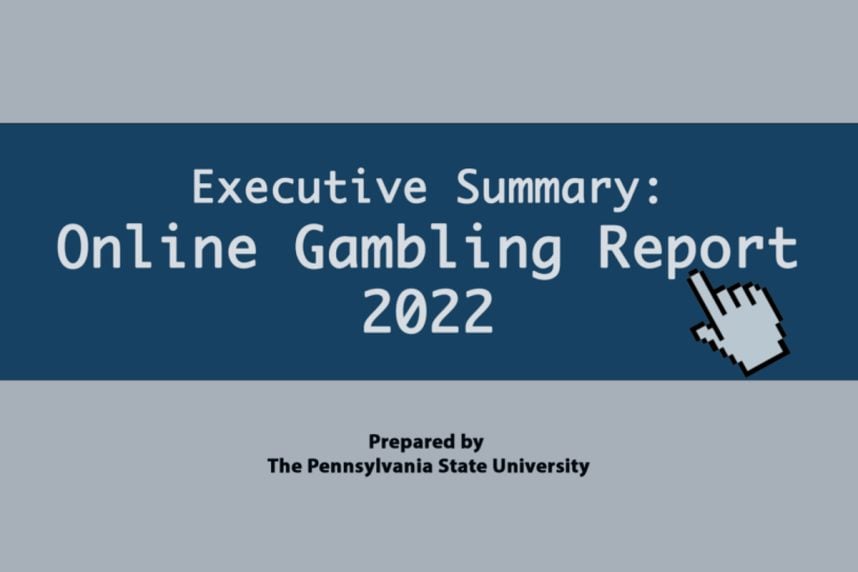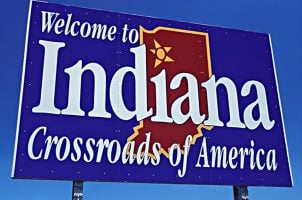Pennsylvania iGaming Study Reaches Concerning Conclusions
Posted on: April 5, 2023, 08:49h.
Last updated on: April 5, 2023, 02:04h.
Pennsylvania’s 2017 expansion of commercial gambling included internet casinos with interactive slots and table games, plus sports betting. The latter arrived online after the US Supreme Court struck down a federal prohibition on such gambling in May 2018.

The 2017 law requires the state to conduct an annual assessment to determine the societal impact of iGaming and mobile sports betting. The 2022 study is headlined by a major finding that presumably concerns state regulators: more than a third of all online casino gamblers and/or sports bettors reported having at least one problem with their internet betting behavior.
The “2022 Online Gambling Report,” completed through a partnership between the Pennsylvania Department of Drug and Alcohol Programs (DDAP), Penn State University, and the Pennsylvania Gaming Control Board (PGCB), found that 36.7% of all online gamblers conceded that they experienced at least one gambling problem. Examples of gambling problems include betting more or spending more time gambling than the player initially intended, betting until their wagering account is exhausted, and missing social events because of their gambling.
State officials say the 2022 findings will be applied to new responsible gaming measures.
“This report will assist DDAP in its mission to assess and address how gambling behaviors impact compulsive and problem gambling within the Commonwealth,” said DDAP Acting Secretary Dr. Latika Davis-Jones.
“We want to ensure we are offering all the resources we can at the state level to anyone who may be experiencing problem gambling behaviors. Knowing the current online gambling trends in the state will help DDAP make informed decisions and help to spread awareness that treatment and resources are available to help when this recreational hobby becomes a more serious problem,” Dr. Davis-Jones added.
iGaming Insights
The annual Pennsylvania iGaming review is funded through fees that iGaming and online sportsbooks pay the PGCB throughout the year. Pennsylvania, the nation’s second-richest gaming state behind Nevada last year, continues to expand its legal gambling options.
Pennsylvania has 17 brick-and-mortar casinos, five more than just a few years ago. Another land-based casino project has been licensed for State College.
While legacy gaming — in-person retail slots and table games — continues to enlarge in terms of annual gross gaming revenue (GGR), Pennsylvania’s relatively new iGaming market is of more concern as it relates to potential problem gambling. Pennsylvania gamblers lost over $1.36 billion playing interactive slots and table games last year. In 2020, that number was $565.7 million.
“It is vital that we explore and analyze the trends and risks that are captured annually within these reports. Organizations, including the PGCB, can create new tools and modify existing programs to align with report findings to better serve those who are experiencing problems with their gambling behavior,” said Elizabeth Lanza, the director of the PGCB’s Office of Compulsive and Problem Gambling.
Some Players Seek Help
The Pennsylvania iGaming report found that about 11% of adults in the state participated in online gambling last year. The average gambler is in their late 30s, is male (66%), and lives in a household with an annual income upwards of $50K (52.3%).
Josh Ercole, executive director of the Council on Compulsive Gambling of Pennsylvania, says the agency’s 1-800-GAMBLER hotline has proven resourceful for those in need.
Ercole says his agency fielded about 1,140 self-help calls in 2019. The number of calls last year rose to more than 2,600 calls.
Related News Articles
Indiana Report Says iGaming Won’t Harm Brick-and-Mortar Casinos
Pennsylvania Casino Retail Revenue Slows in November, iGaming Offsets Drop Off
Most Popular
LOST VEGAS: ‘Tony The Ant’ Spilotro’s Circus Circus Gift Shop
Las Vegas Overstated F1 Race’s Vegas Impact — Report
Mega Millions Reportedly Mulling Substantial Ticket Price Increase
Las Vegas Strip Stabbing Near The Strat Leaves One Man Dead
Most Commented
-
End of the Line for Las Vegas Monorail
— April 5, 2024 — 90 Comments -
Mega Millions Reportedly Mulling Substantial Ticket Price Increase
— April 16, 2024 — 8 Comments -
Long Island Casino Opponents Love New York Licensing Delays
— March 27, 2024 — 5 Comments -
VEGAS MYTHS RE-BUSTED: You Can Buy Legal Weed On the Strip
— March 22, 2024 — 4 Comments
















Last Comment ( 1 )
Muchos Gracias for your article post.Really thank you! Fantastic.